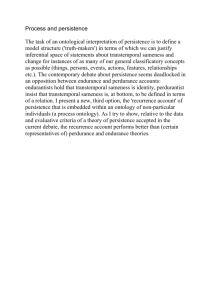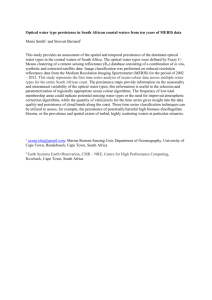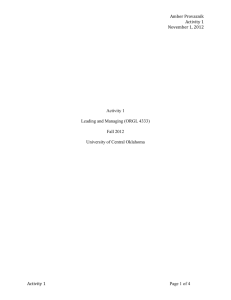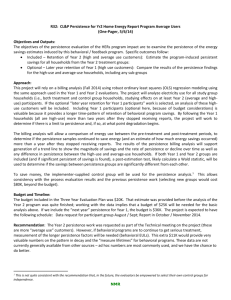Eval 2002 NWS NFDRS Forecasts
advertisement
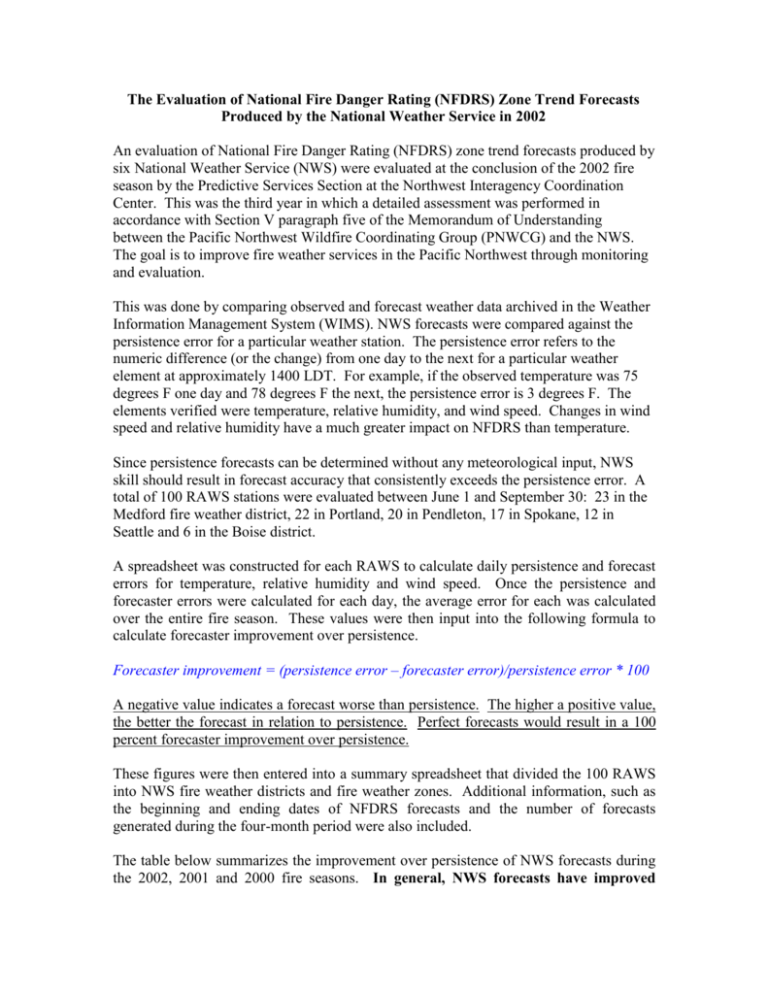
The Evaluation of National Fire Danger Rating (NFDRS) Zone Trend Forecasts Produced by the National Weather Service in 2002 An evaluation of National Fire Danger Rating (NFDRS) zone trend forecasts produced by six National Weather Service (NWS) were evaluated at the conclusion of the 2002 fire season by the Predictive Services Section at the Northwest Interagency Coordination Center. This was the third year in which a detailed assessment was performed in accordance with Section V paragraph five of the Memorandum of Understanding between the Pacific Northwest Wildfire Coordinating Group (PNWCG) and the NWS. The goal is to improve fire weather services in the Pacific Northwest through monitoring and evaluation. This was done by comparing observed and forecast weather data archived in the Weather Information Management System (WIMS). NWS forecasts were compared against the persistence error for a particular weather station. The persistence error refers to the numeric difference (or the change) from one day to the next for a particular weather element at approximately 1400 LDT. For example, if the observed temperature was 75 degrees F one day and 78 degrees F the next, the persistence error is 3 degrees F. The elements verified were temperature, relative humidity, and wind speed. Changes in wind speed and relative humidity have a much greater impact on NFDRS than temperature. Since persistence forecasts can be determined without any meteorological input, NWS skill should result in forecast accuracy that consistently exceeds the persistence error. A total of 100 RAWS stations were evaluated between June 1 and September 30: 23 in the Medford fire weather district, 22 in Portland, 20 in Pendleton, 17 in Spokane, 12 in Seattle and 6 in the Boise district. A spreadsheet was constructed for each RAWS to calculate daily persistence and forecast errors for temperature, relative humidity and wind speed. Once the persistence and forecaster errors were calculated for each day, the average error for each was calculated over the entire fire season. These values were then input into the following formula to calculate forecaster improvement over persistence. Forecaster improvement = (persistence error – forecaster error)/persistence error * 100 A negative value indicates a forecast worse than persistence. The higher a positive value, the better the forecast in relation to persistence. Perfect forecasts would result in a 100 percent forecaster improvement over persistence. These figures were then entered into a summary spreadsheet that divided the 100 RAWS into NWS fire weather districts and fire weather zones. Additional information, such as the beginning and ending dates of NFDRS forecasts and the number of forecasts generated during the four-month period were also included. The table below summarizes the improvement over persistence of NWS forecasts during the 2002, 2001 and 2000 fire seasons. In general, NWS forecasts have improved slightly, but are still below the accuracy standards established in the Memorandum of Understanding between the NWS and the Pacific Northwest firefighting agencies. The negative red figures in the wind column indicate forecast skill less than that of persistence. Office Seattle 2002 2001 2000 Spokane 2002 2001 2000 Portland 2002 2001 2000 Pendleton 2002 2001 2000 Medford 2002 2001 2000 Boise 2002 2001 2000 MOU Fcst Standards Improvement over Persistence Temperature Relative Hum. Wind 25.89 23.24 22.42 20.59 21.17 19.10 5.23 -11.18 -18.12 25.56 20.69 19.43 14.52 17.89 8.64 -6.86 -13.94 -17.59 27.36 26.71 29.54 22.45 18.53 18.72 -7.94 -11.09 -11.69 35.12 31.26 28.76 22.45 20.62 19.06 -1.49 -6.94 -15.88 31.75 28.80 25.75 18.15 14.92 14.54 -11.83 -2.53 -6.29 29.28 32.25 N/A 20.51 23.54 N/A 7.31 0.37 N/A 35.00 25.00 10.00

